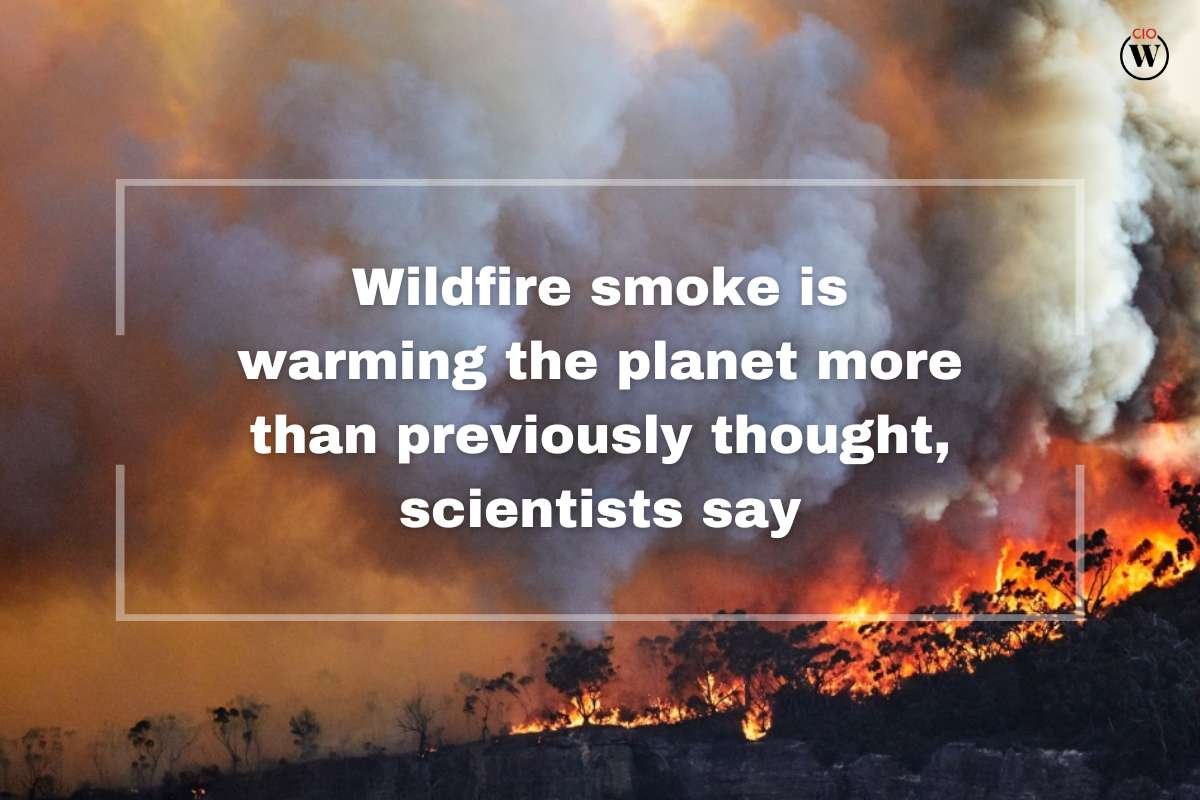According to new research, among the diverse mixture of particles that make up wildfire smoke, an abundant but previously unidentified form has been shown to capture an unexpected amount of heat.
These findings suggest that Earth is warming more than previously believed, which is in line with predictions that wildfires will become harsher and more common in the years to come due to human-induced climate change.
Scientists examined the wildfire smoke from three distinct lightning-caused fires using NASA’s Douglas DC-8 aircraft, a quadjet (a jet powered by four engines) that is 54 years old and has been converted into a flying science lab. In 2019, all three of them—the Shady Creek in Idaho, the Castle and Ikes in Arizona, and the Ikes in California—burned vast areas of land in the western United States.
Their research demonstrated that a novel class of particles linked to these fires, called organic “dark brown carbon,” have a remarkable capacity to absorb heat. In fact, they are responsible for more than half of the heat absorbed by the gathered wildfire smoke.
According to Rohan Mishra, an associate professor of mechanical engineering and materials science at Washington University in St. Louis, Missouri, and a co-author of the new study, “it’s likely that they form similarly to soot in the high-temperature flames along the leading edges of wildfires.”
Scientists deployed equipment on NASA’s airborne science lab to gather smoke samples in July and August 2019 at a height of around 6.2 miles (10 km). They deployed a mobile lab on the ground to gather wildfire smoke samples from a few fire management locations that were about 1.8 miles (3 km) away.
How wildfire smoke are caused by climate change
In comparison to another type of wildfire smoke particle known as black carbon or soot, which absorbs sunlight and then converts that energy into heat, the new particles are less prevalent. The newly researched dark brown carbon particles appear to be four times more prevalent in smoke than black carbon, which is the second-largest contributor to global warming after carbon dioxide.
The findings of this most recent study, which was conducted in partnership by NASA and the National Oceanic and Atmospheric Administration (NOAA), highlight the pressing need for more research into brown carbon’s role in global warming. Although theoretically included in current climate models, the warming impacts of these particles are still quite unknown. It’s also important to note that these particles are also emitted into the atmosphere by the burning of fossil fuels.
The lead author of the new study, Rajan Chakrabarty, an associate professor of energy, environment, and chemical engineering at the Washington University in St. Louis, said in a statement that climate models frequently ignore or dismiss organic carbon as having little effect on warming compared to black carbon.









